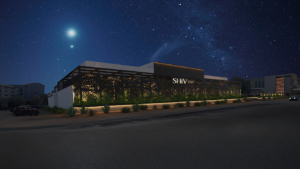As consumers demand efficiency and simplicity, here are six trends for builders to stay ahead of the competition.
1. IoT Connectivity is on the Rise
IoT (the Internet of Things) refers to smart products like Alexa, which connect throughout the home, covering heating, ventilation, air conditioning, and security.
As Steve Basten from John Burns Real Estate Consulting explains, smart products have been around for a while, but the technology has improved.
“For example, take programmable shower valves. You go to the interface and press buttons to change the temperature,” he says.
But, you have to be at the shower to do this. In contrast, smart products like Google Home can be used anywhere in the house.
“There’s no programming, and you can fill your bathtub while you’re driving home from the grocery store. IoT allows a seamless user experience and I think more people will adopt this technology as they realize how much time they’ll save,” Basten says.
Companies are taking advantage of this opportunity. Moen, Delta, Kohler, and American Standard are rolling out smart plumbing, while Broan-NuTone and Baldwin launched voice-controlled home security that connects to Amazon or Microsoft platforms. And thanks to the IoT platform, these products can be connected in one home.
“There isn’t one company that makes all these things. Instead, manufactured design IoT enabled products and they’re integrated together. That’s what makes a smart home,” Basten says.
2. Maximize Labor Efficiency
As businesses seek to streamline their processes, Katerra stood out for its plan to become a one-stop shop for production, controlling everything from raw materials to framing.
“Builders are reporting trade shortages, so companies are trying to take labor out of the equation,” Basten notes. “Automation eliminates the need for skilled labor. There’s a growing market for products that can be turned around quickly and aren’t susceptible to trade constraints.”
Simplicity is key. For example, Keeney Manufacturing Co. offered a plumbing alternative connected in three easy steps.
“Faucets used to come in 20 pieces. Now, they just need to be attached to the outlet. A plumbing job goes from two hours to 20 minutes, letting someone do a multifamily complex in days instead of weeks,” Basten says.
3. Less Maintenance Through Engineered Products
Natural-looking products are aesthetically pleasing, but a hassle to maintain, so companies are engineering their own.
“Consumers want to know what they’re getting,” explains Basten. “They can go to the showroom and say I want this marble, instead of searching the stone yards. We’re an instant gratification society, so no one wants to chase things down.”
Consider Corian’s Quartz. It requires less maintenance than natural stone slabs, and the factory process creates a consistent appearance.
“People want more time. To meet consumers’ demands, companies need to get simpler and faster,” Basten says.
4. Black is Back in Style
In terms of style, black stainless is becoming increasingly popular, as well as a mixed metal look.
“You can have a stove that’s stainless, but knobs that are matte black. It can be different colors, like black or silver or gold, but it can also be different finishes, like polish or satin or matte. Trendy finishes are being mixed together, driven by consumer’s design preferences,” Basten says.
5. Customization Made Easy
To stay competitive, manufacturers have invested heavily in customization, while minimizing cost for the customer.
“Offering lots of choice with a quick lead time is a supply chain nightmare. But, people want choices and they don’t want to wait. If you can get a Tesla in a month, why would you wait eight weeks for a faucet? That’s where market research comes in. Companies have to know what consumers want so they can offer choices intelligently,” Basten says.
Now, higher-end finishes don’t have to be ordered from another vendor or commissioned separately. Instead, consumers can purchase modifications directly through the manufacturer.
6. The Ultramodern Aesthetic
As homebuilders shifted to an ultramodern style, now interior design products follow, with large formats and modern cubist or geometric styles.
“Ultramodern design is all about simple, clean lines,” Basten says. “Minimalistic, but futuristic. People don’t want gingerbread cut-out. Instead, they want less trim, less materials, and more natural light.”
This trend may shift costs, but it all depends on context.
“The type and quantity of material is changing. It’s a more simplistic palette.”
Keeping abreast of these trends is vital for builders to stay competitive.
“Now more than ever, consumers are informed. They have everything at their fingertips to make decisions, from HGTV to Pinterest,” Basten says. “They want the latest and greatest of everything, and they know exactly what finishes and countertops they want. To capture the attention of people looking at new or resale homes, builders need to entice them with choices.”




